Curated by the artist and published online by Media-Star.
Page 2 of 3

- Using a macro lens or the zoom function on your smart phone or tablet are good ways to study Kolker’s abstract decalcomania.
- Both full color and grayscale versions connote the extreme variations in our affects during the pandemic

Paul Kolker: carolina here I come decalcomania macro, 2020
inkjet and acrylic on canvas
33 x 55 inches
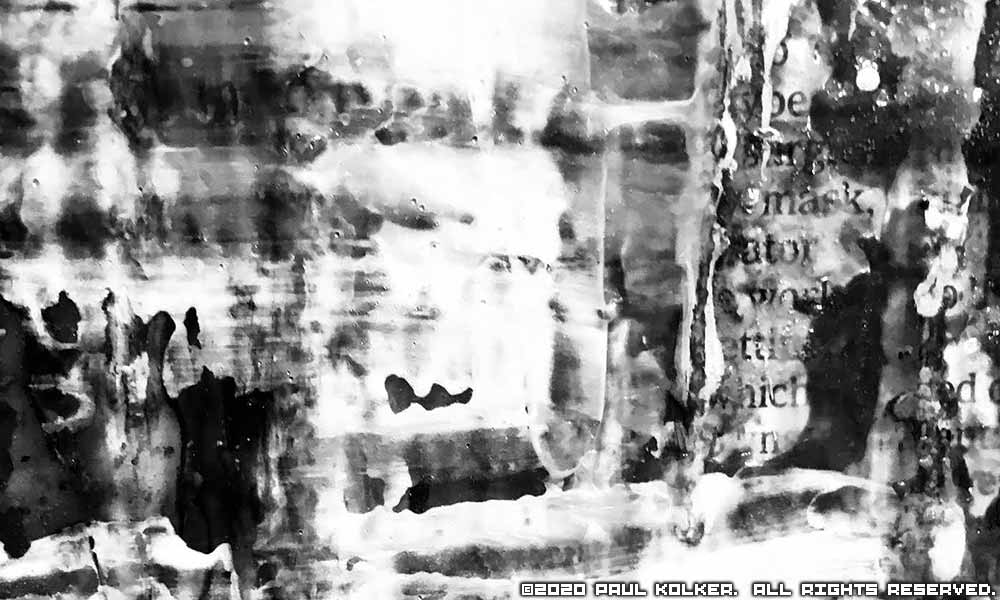
- Paul Kolker: carolina here I come decalcomania macro noir, 2020
- inkjet and acrylic on canvas
- 33 x 55 inches
Please note the periodic motion of the paint mixing with mediums graphically recorded on the canvas as a staccato-like stutter in the artist’s gestural movements.
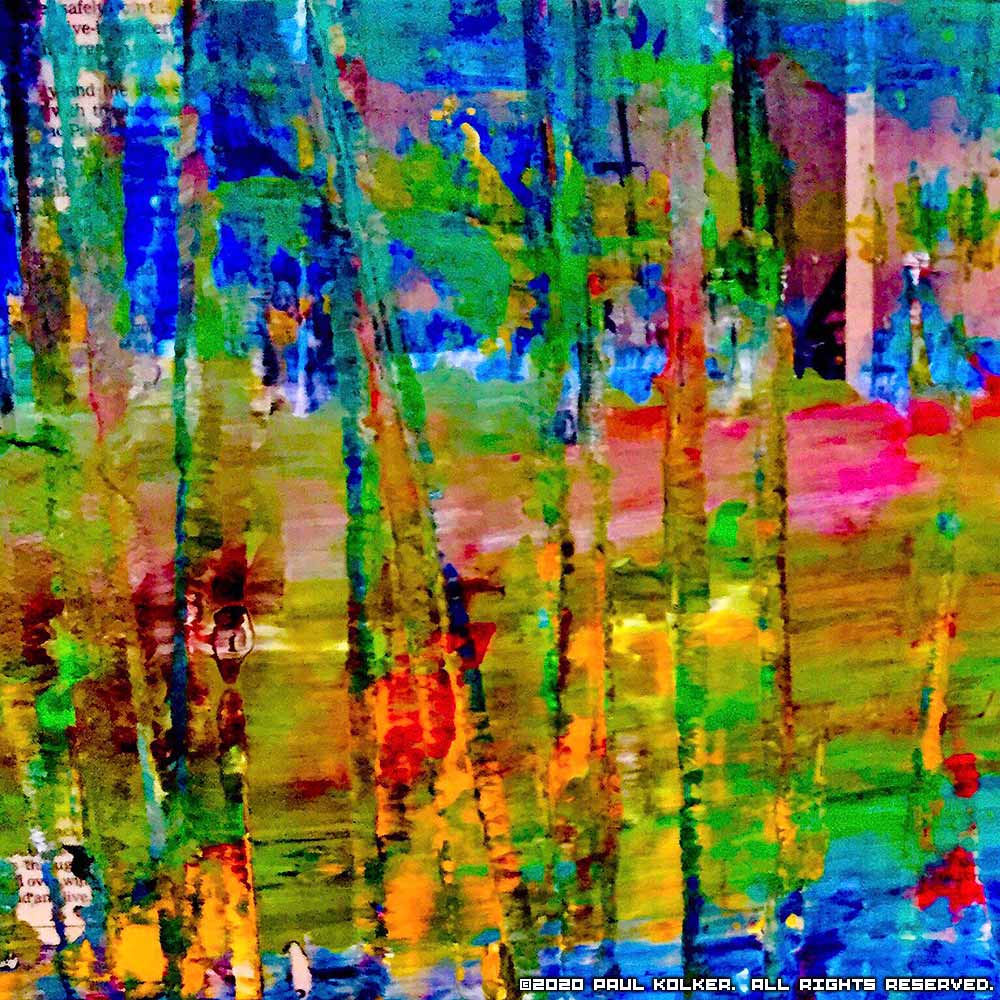
- Paul Kolker: deep in the woods decalcomania, 2020
- inkjet and acrylic on canvas
- 33 x 33 inches
Kolker uses a brush, brayer or tube roller and a shim stick to move the paint and mediums beneath the sheets of clear vinyl. The gestural movements are deliberate and always in clear view.
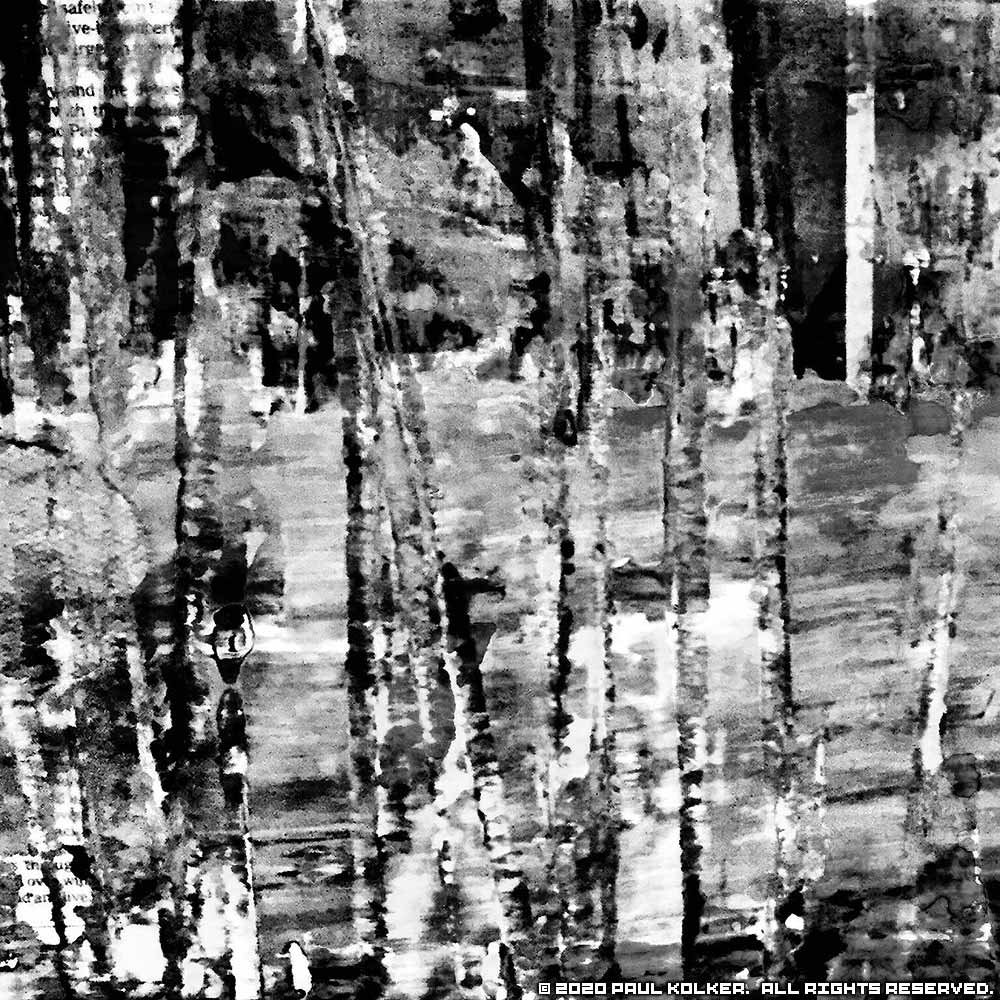
- Paul Kolker: deep in the woods decalcomania noir, 2020
- inkjet and acrylic on canvas
- 33 x 33 inches
Kolker’s subtext in his titling is that the pandemic’s disruption of our lives is like the annoyance, or challenge, of an errant golf shot.
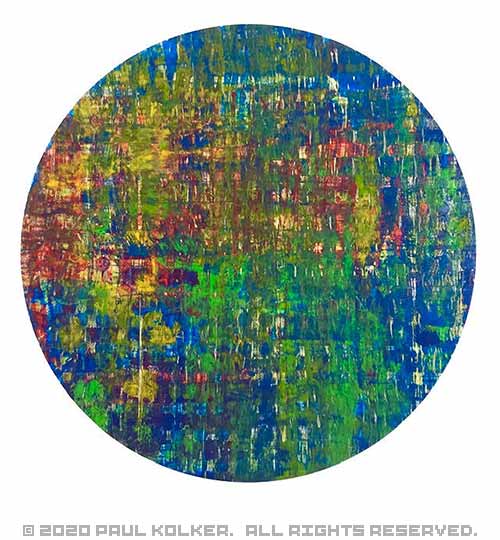
- Paul Kolker: ibn Ezra’s orbs decalcomania bezold blanc op. 1, 2020
- acrylic on newspaper tears laid on canvas
- 44 x 44 inches
Kolker painted nine canvases, opus 1 through 9, in attribution to ibn Ezra’s novel base nine counting system.
- Paul Kolker: ibn ezra’s orbs decalcomania bezold blanc op.2, 2020
- acrylic on newspaper tears laid on canvas
- 44 x 44 inches
The linear striations, set at a right angle to the underlying text, serve to test the viewer’s indirect perception.
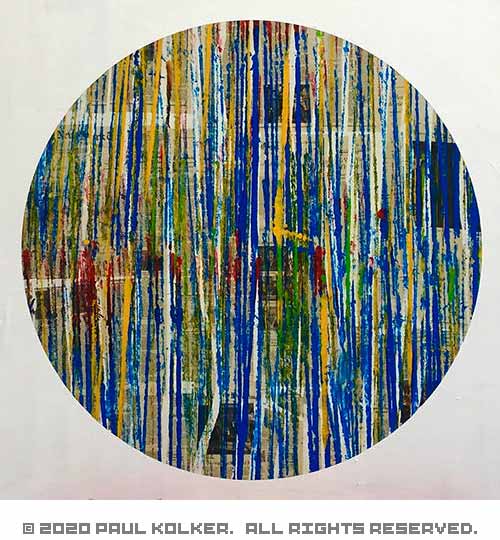
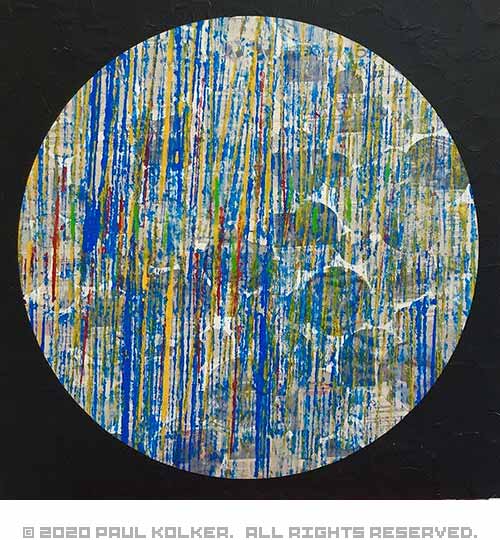
- Paul Kolker: ibn ezra’s orbs decalcomania bezold noir op.3, 2020
- acrylic on newspaper tears laid on canvas
- 44 x 44 inches
Wilhelm von Bezold was a tapestry maker who, at the end of the nineteenth century, experimented with colors and how they are perceived on a white field, black field or a particular color field.
- Paul Kolker: ibn ezra’s orbs decalcomania bezold noir op. 4, 2020
- acrylic on newspaper tears laid on canvas
- 44 x 44 inches
In this work, each layer of color was gesturally manipulated to mix with medium and retardant using separate vinyls for each coat. The overall effect is that of a low opacity wash, enabling the viewer to notice the fractal patterning as well as nearly the entire newspaper text.
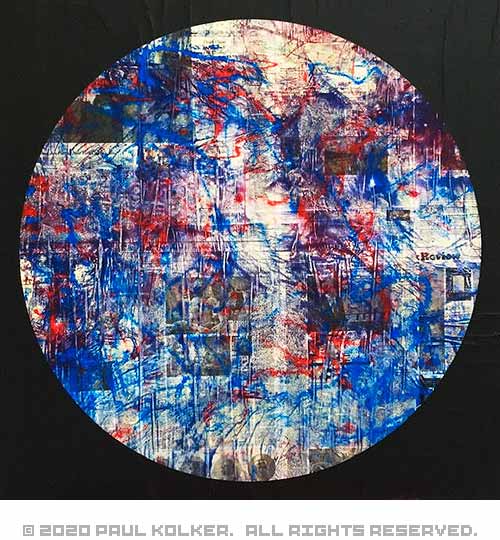
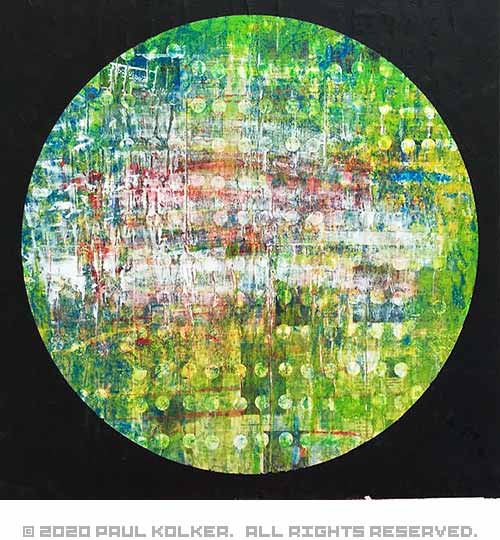
- Paul Kolker: ibn ezra’s orbs decalcomania bezold noir op.5, 2020
- acrylic on newspaper tears laid on canvas
- 44 x 44 inches
Notice how the surrounding black signet exaggerates the perception of of the overlying white washes and striations of opus 5.
- Paul Kolker: bn ezra’s orbs decalcomania bezold blanc op.6, 2020
- acrylic on newspaper tears laid on canvas
- 44 x 44 inches
In life, gray is a sign of maturity. In painting it may be a sign of overworked color mixing. In his Autobiography of Vincent Van Gogh, in his letter ‘Dear Theo, 1881,’ Van Gogh praises the virtues of mixing grays on his palette, because they are everywhere in nature.
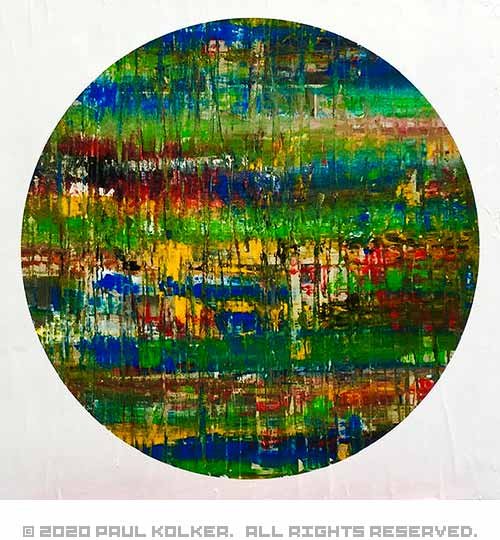
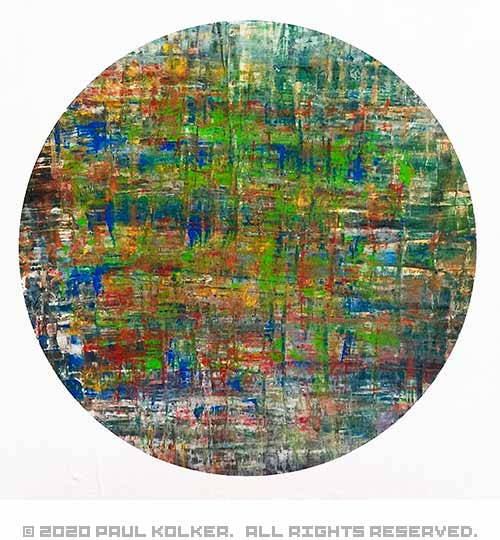
- Paul Kolker: ibn ezra’s orbs decalcomania bezold blanc op.7, 2020, 2020
- acrylic on newspaper tears laid on canvas
- 44 x 44 inches
Notice the perceptually contrasting effects of white washes and striations on this painting surrounded by a white signet.

- Paul Kolker: ibn ezra’s orbs decalcomania bezold noir op.8, 2020
- acrylic on newspaper tears laid on canvas
- 44 x 44 inches
The signet surrounding the painting is stenciled for its hard edge effect and to remind the viewer that a dot may be a universe, and a universe a dot.
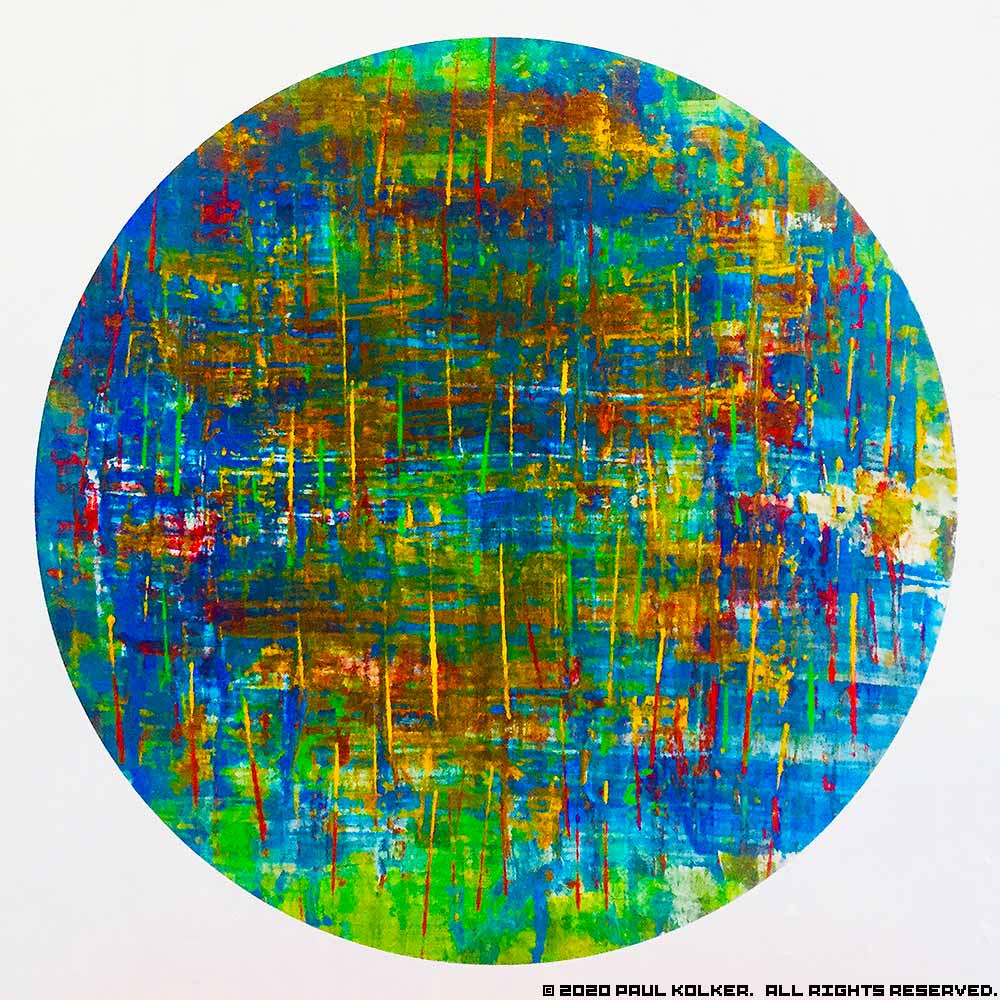
- Paul Kolker: ibn ezra’s orbs decalcomania bezold blanc op.9, 2020
- acrylic on newspaper tears laid on canvas
- 44 x 44 inches
Striations are made with a squeegee or flat stick scraped over the vinyl sheet sandwiching the paint and mediums. Rippling effects can be controlled by the angle and direction of the pull and lifting of the vinyl sheet.
